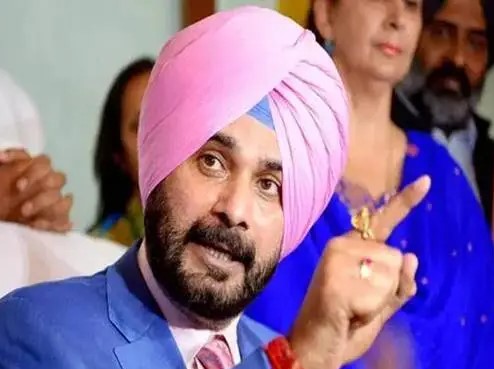 Navjot Singh Sidhu, the former cricketer-turned-politician, has long been a prominent face of the Indian National Congress in Punjab. He joined the Congress in 2017 after leaving the Bharatiya Janata Party, positioning himself as a charismatic and vocal leader with a strong public connect. His popularity in Amritsar and his national celebrity status brought him instant attention within the party and among the public, making him a natural contender for leadership positions within the state unit.
Navjot Singh Sidhu, the former cricketer-turned-politician, has long been a prominent face of the Indian National Congress in Punjab. He joined the Congress in 2017 after leaving the Bharatiya Janata Party, positioning himself as a charismatic and vocal leader with a strong public connect. His popularity in Amritsar and his national celebrity status brought him instant attention within the party and among the public, making him a natural contender for leadership positions within the state unit.
Sidhu was appointed the President of the Punjab Pradesh Congress Committee (PCC) in July 2021. However, his tenure in this role was short-lived. By September 2021, he resigned, citing his inability to compromise on Punjab’s future and signaling his frustration with internal party dynamics. His resignation reflected both personal dissatisfaction and the broader factional tensions within the state Congress, particularly with former Chief Minister Capt Amarinder Singh and other senior leaders. Amarinder Singh had openly criticized Sidhu’s leadership, calling him “not a stable man,” which further highlighted the internal discord.
One key reason Sidhu is not currently serving as the state Congress chief is the party’s poor electoral performance under his brief leadership. The Congress suffered setbacks in Punjab, prompting the High Command to replace him with Amrinder Singh Raja Warring as PCC chief. Additionally, Sidhu’s ambitions appeared to clash with the central leadership’s strategy. While he reportedly aspired to the Chief Minister’s position or a substantial role in policymaking, the Congress High Command preferred a leader who could maintain factional balance, ensure organisational cohesion, and avoid public controversies that might weaken the party ahead of future elections.
Internal factionalism has also played a critical role. Sidhu’s disputes with influential leaders and dissatisfaction with ministerial appointments demonstrated that he lacked the full support of key sections of the party in Punjab. The High Command, therefore, viewed him as a potentially divisive figure, despite his popularity among voters. Balancing caste representation, regional influence, and internal unity has become a central concern for Congress in Punjab as it prepares for the 2027 elections, and Sidhu’s polarizing presence complicated that strategy.
Despite these challenges, Sidhu’s political journey in Punjab is far from over. Reports suggest that his recent meetings with Priyanka Gandhi indicate he may be positioning himself for a renewed role in the state party structure. If he manages to mend relationships with key factions, demonstrate organisational ability, and align with the High Command’s strategic priorities, he could be considered for leadership positions again. However, for now, the Congress appears to be prioritizing stability, experience, and internal consensus over celebrity appeal and personal ambition.
In conclusion, Navjot Singh Sidhu is not the current Punjab Congress president because of electoral setbacks, internal factionalism, strategic caution by the party high command, and his own ambitious positioning. While he retains significant public influence and political capital, his return to the top post would depend on how these dynamics evolve in the lead-up to the 2027 Punjab assembly elections. Until then, his political future remains tied to negotiations, reconciliations, and the High Command’s long-term strategy for the state.